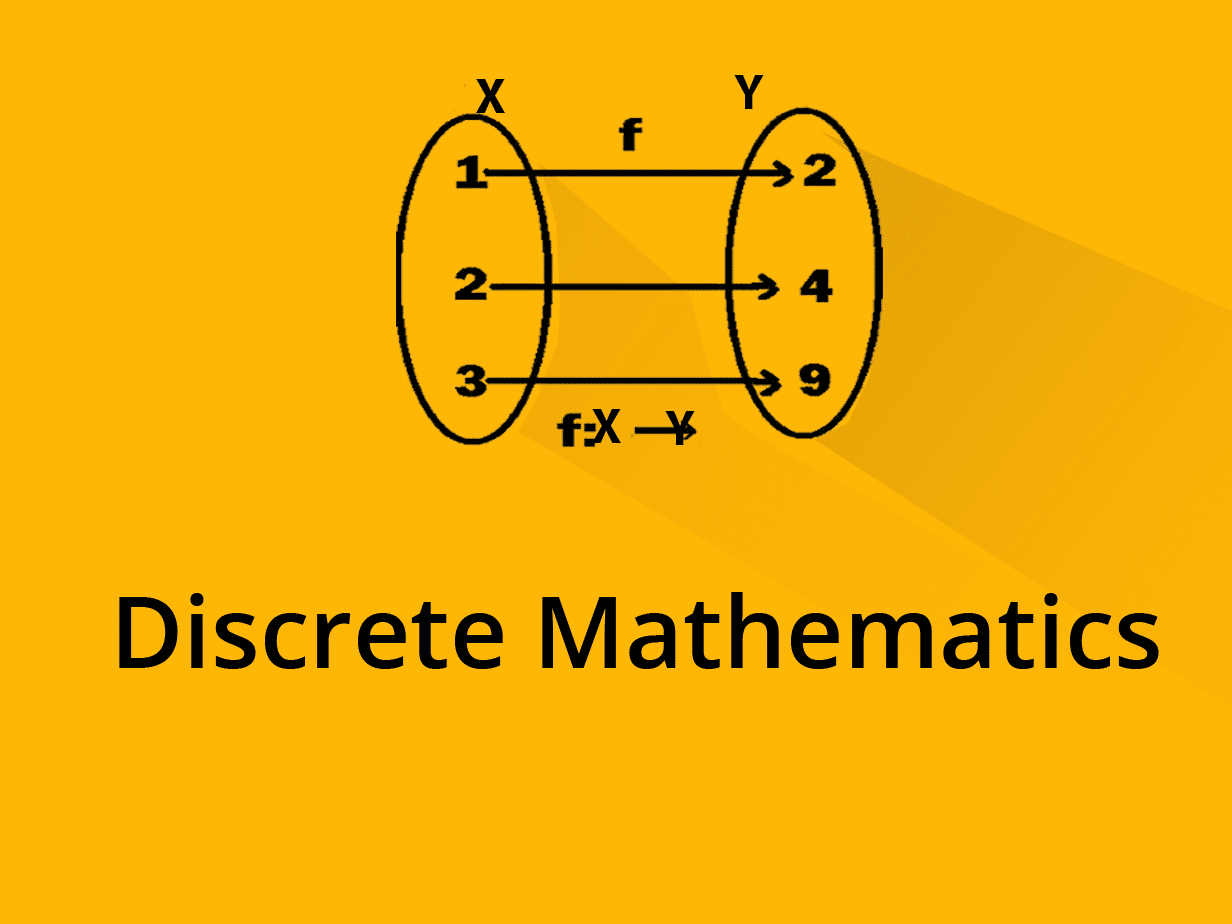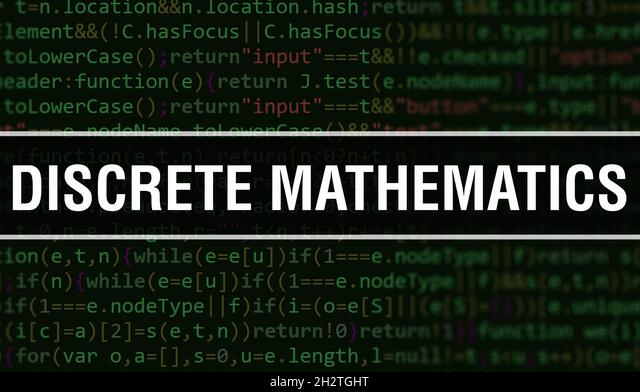The field of Discrete mathematics is not the same as applied math. Applied mathematicians are concerned with solving problems that arise in real life. For example, a mathematician may be asked to find an answer to whether there exists a prime number between 1 and 100. On the other hand, a discrete mathematician might be required to prove that any given sequence has a repeating pattern (which is quite easy).
In addition, the field of discrete mathematics does not involve proofs or calculations. Instead, it focuses on patterns within data sets. Discrete mathematicians do this by studying structures such as graphs, sequences, and permutations.
Discrete mathematics was first established in 1885 when George Boole published his book titled A Mathematical Analysis of Logic. It is an area of study that combines the fields of pure maths, logic, combinatorics, probability, statistics, and computer science.
Although it is a relatively new area of research, it continues to develop rapidly. The definition of what constitutes discrete mathematics has changed over time.
Why Do We Need Discrete Maths?
When you’re looking at a problem, the first thing that you want to know is whether or not it’s solvable. If it’s possible to solve, then you can proceed with your work. However, if it isn’t possible to solve, then you’ll have to come up with another solution. This is where discrete mathematics comes into play.
If you’ve ever tried solving an equation, you might be familiar with this type of math. For example, you could try multiplying both sides of the equation by 2 to get a new one. That would mean that you were changing the original number.
In discrete mathematics, you can change numbers without actually changing the value of the whole number. The way that it works is that you take each part of a number and multiply them together. So, instead of just adding up all of the digits in the decimal system, you’d add up the ones, the tens, the hundreds, etc.
This is why discrete mathematics is so important. It allows you to find solutions to problems even if they don’t seem like they should be able to be solved.
The Basics of Discrete Mathematics
When you’re learning math, there is no question that you need to know how to solve basic arithmetic problems. If you want to get a better understanding of this subject, you might be interested in reading the article below. This guide explains the importance of solving these problems, and why you should learn them.
Solving arithmetic problems is essential for any student who wants to improve their grades. You’ll have to solve many different kinds of problems in school, and it’s important to understand the concepts behind each one. For example, you will encounter multiplication and division problems, as well as addition and subtraction.
To master the skills that you need to solve all of these problems correctly, you first need to learn the fundamentals of discrete mathematics.
You Need To Know How to Solve Arithmetic Problems
There are two main types of mathematical equations: algebraic equations, and geometric equations. Algebraic equations involve a single variable, while geometric equations use variables that refer to points on the number line. In other words, you can’t solve an equation like x = 2 unless you know what the value of x is. On the other hand, if you want to find the area of a rectangle with sides of lengths 8 and 10, then it won’t help to multiply 8 by 10 and divide that result by 4.
Importance of Discrete Maths for Students?
You need to know that mathematics is important in today’s world. You will be using math in your daily life, whether you realize it or not. Math is used in everything from how you pay at the grocery store, to the way you drive a car, to the type of job you have. If you want to get ahead in life, you’ll need to learn some basic math skills.
If you’re looking for ways to improve your math skills, then you should consider learning some of the topics covered by Discrete Mathematics. This is an area of study where you focus on solving problems with numbers. The main goal is to figure out the right answer.
There are many different areas that you can explore in this field. Some examples include counting and grouping; addition, subtraction, multiplication, division, fractions, decimals, percentages, ratios, and probability.
The best thing about studying these subjects is that you don’t have to go through any calculations. Instead, you simply work out the answers to the questions.
This makes it easy to practice your math skills. When you start to solve some of the exercises, you will quickly notice that certain patterns repeat themselves.
Types of Discrete Mathematics
In this article, you will learn more about the different kinds of discrete mathematics. There are two main categories of discrete math: combinatorics and graph theory. You can use these techniques to solve problems that involve counting, sorting, grouping, or arranging items.
Combinatorics
You might have heard the term “combinatorics.” This is an area of math where you count how many ways you can arrange objects in a certain way. For example, you could count the number of possible arrangements of the letters in your name. Or you can figure out how many different ways you can make a list by listing the numbers from 1-10.
Graph Theory
Another type of discrete math is called graph theory. With graphs, you create mathematical models that represent relationships between things. The most common kind of graph is the network. Networks are used to model social networks and computer networks.
If you want to understand why there are so many different types of discrete math, then it’s important to know the difference between combinatorics and graph theory. Combinatorics is the study of how many ways something can be arranged. Graph theory is about modeling real-life situations using mathematically created diagrams.

What Are the Applications of Discrete Mathematics?
A mathematician is someone who studies numbers, shapes, space, time, etc., but he/she doesn’t have to be very smart.
One of the most important things that a person needs to become a good mathematician is the ability to solve problems. If you can’t figure out how to do this, you’re not going to make it in the world of math.
You can use all kinds of techniques to help you understand the problem at hand. For example, you might take the information given and try to put it into words. You could also draw a picture of what’s happening.
If you’re struggling with a particular concept, you may want to ask other people for their opinion on the matter.
Another way to get some ideas is to look at the examples that are already known. Once you’ve figured out the solution, then you can apply your new knowledge to similar situations. This will give you the confidence you need to tackle more complex problems.
Finally, there are many books that you can read. The best ones will explain things in great detail so that you’ll feel like you know what’s going on.
How Does Discrete Mathematics Relate to Math?
Mathematics is a very broad subject. There are many different kinds of mathematical ideas that people use to solve problems. One example of this is the concept of discrete mathematics.
If you’re wondering how discrete mathematics relates to other areas of math, the answer is that it doesn’t have anything to do with any of them. The main thing that discrete mathematicians study is algorithms.
Algorithms are basic rules that tell you how to perform a certain task. For example, an algorithm might describe the steps needed to multiply two numbers together. Another type of algorithm is a computer program. Computer programs can be used to help people complete tasks like creating spreadsheets or playing video games.
A mathematician who studies discrete mathematics usually works in one of three fields: graph theory, combinatorics, or probability. Graph theorists are interested in studying graphs, while combinatorics experts focus on counting things. Probability experts work with probabilities and statistics.
Another area of math that has a lot of overlap with discrete math is number theory. Number theorists also deal with problems involving sets of integers. However, they don’t necessarily look at all of the possible solutions to these problems. Instead, they just try to find the simplest solution.
